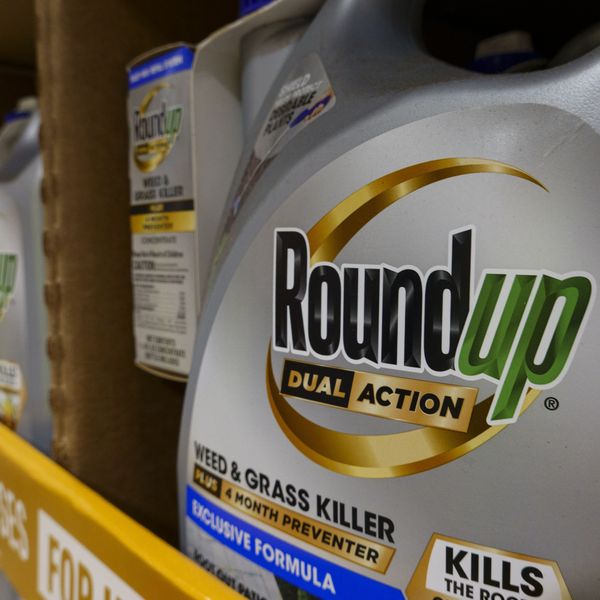Thousands of Schools in 'Shadow of Risky Chemical Facilities'
Series of incidents reveals 'glaring gaps in the country's patchwork of oversight laws that govern the use of hazardous chemicals'
Ten thousand schools housing 4.6 million children in the U.S. are located within one mile of a dangerous chemical facility, according to an analysis released Wednesday one year after a major explosion at a fertilizer plant in West, Texas killed 15 people, injured hundreds, and severely damaged nearby schools.
One in ten students attend school in the "shadow of a risky chemical facility," according to the analysis conducted by the Center for Effective Government. The group looked at factories, refineries and other facilities that report to the U.S. Environmental Protection Agency's (EPA) Risk Management Program. Those facilities contain hazardous chemicals identified by the EPA as "particularly risky to human health or the environment if they are spilled, released into the air, or are involved in an explosion or fire."
"The number of children who are potentially in harm's way is deeply troubling," said Katherine McFate, president and CEO of the Center for Effective Government. "Minority and low-income kids bear the greatest risks, but no one is immune from this danger."
Among the states that are most dangerous for students were California, Texas, and Illinois, all of which had the largest numbers within one mile of a facility. North Dakota, Iowa, and Nebraska came next with roughly one third of children attending such schools.
The center created a detailed interactive map of the data.
The analysis comes exactly one year after one of the worst industrial accidents in years--the fertilizer plant explosion in West, Texas. The plant had not been inspected by the cash-strapped Occupational Safety and Health Administration (OSHA) since 1985 and had failed to disclose to the Department of Homeland Security that it was storing 1,350 times the amount of ammonium nitrate that would have brought oversight from that agency.
"The unfortunate reality is that the West, Texas accident is not an isolated occurrence," said Sofia Plagakis at the Center for Effective Government. Throughout the year "explosions and spills involving toxic chemicals have occurred almost regularly, injuring or killing workers and community residents, forcing the evacuation of entire towns, and contaminating drinking water."
These incidents reveal "glaring gaps in the country's patchwork of oversight laws that govern the use of hazardous chemicals," said Plagakis.
Sean Moulton, director of open government policy at the Center for Effective Government, stated, "In the year since the West, Texas disaster, we've seen workers killed, drinking water poisoned, and entire towns evacuated. In state after state, town after town, people have been hurt or worse because of inadequate oversight, aging public and private infrastructure, and chemical industry battles against stronger standards and safeguards."
An Urgent Message From Our Co-Founder
Dear Common Dreams reader, The U.S. is on a fast track to authoritarianism like nothing I've ever seen. Meanwhile, corporate news outlets are utterly capitulating to Trump, twisting their coverage to avoid drawing his ire while lining up to stuff cash in his pockets. That's why I believe that Common Dreams is doing the best and most consequential reporting that we've ever done. Our small but mighty team is a progressive reporting powerhouse, covering the news every day that the corporate media never will. Our mission has always been simple: To inform. To inspire. And to ignite change for the common good. Now here's the key piece that I want all our readers to understand: None of this would be possible without your financial support. That's not just some fundraising cliche. It's the absolute and literal truth. We don't accept corporate advertising and never will. We don't have a paywall because we don't think people should be blocked from critical news based on their ability to pay. Everything we do is funded by the donations of readers like you. Will you donate now to help power the nonprofit, independent reporting of Common Dreams? Thank you for being a vital member of our community. Together, we can keep independent journalism alive when it’s needed most. - Craig Brown, Co-founder |
Ten thousand schools housing 4.6 million children in the U.S. are located within one mile of a dangerous chemical facility, according to an analysis released Wednesday one year after a major explosion at a fertilizer plant in West, Texas killed 15 people, injured hundreds, and severely damaged nearby schools.
One in ten students attend school in the "shadow of a risky chemical facility," according to the analysis conducted by the Center for Effective Government. The group looked at factories, refineries and other facilities that report to the U.S. Environmental Protection Agency's (EPA) Risk Management Program. Those facilities contain hazardous chemicals identified by the EPA as "particularly risky to human health or the environment if they are spilled, released into the air, or are involved in an explosion or fire."
"The number of children who are potentially in harm's way is deeply troubling," said Katherine McFate, president and CEO of the Center for Effective Government. "Minority and low-income kids bear the greatest risks, but no one is immune from this danger."
Among the states that are most dangerous for students were California, Texas, and Illinois, all of which had the largest numbers within one mile of a facility. North Dakota, Iowa, and Nebraska came next with roughly one third of children attending such schools.
The center created a detailed interactive map of the data.
The analysis comes exactly one year after one of the worst industrial accidents in years--the fertilizer plant explosion in West, Texas. The plant had not been inspected by the cash-strapped Occupational Safety and Health Administration (OSHA) since 1985 and had failed to disclose to the Department of Homeland Security that it was storing 1,350 times the amount of ammonium nitrate that would have brought oversight from that agency.
"The unfortunate reality is that the West, Texas accident is not an isolated occurrence," said Sofia Plagakis at the Center for Effective Government. Throughout the year "explosions and spills involving toxic chemicals have occurred almost regularly, injuring or killing workers and community residents, forcing the evacuation of entire towns, and contaminating drinking water."
These incidents reveal "glaring gaps in the country's patchwork of oversight laws that govern the use of hazardous chemicals," said Plagakis.
Sean Moulton, director of open government policy at the Center for Effective Government, stated, "In the year since the West, Texas disaster, we've seen workers killed, drinking water poisoned, and entire towns evacuated. In state after state, town after town, people have been hurt or worse because of inadequate oversight, aging public and private infrastructure, and chemical industry battles against stronger standards and safeguards."
Ten thousand schools housing 4.6 million children in the U.S. are located within one mile of a dangerous chemical facility, according to an analysis released Wednesday one year after a major explosion at a fertilizer plant in West, Texas killed 15 people, injured hundreds, and severely damaged nearby schools.
One in ten students attend school in the "shadow of a risky chemical facility," according to the analysis conducted by the Center for Effective Government. The group looked at factories, refineries and other facilities that report to the U.S. Environmental Protection Agency's (EPA) Risk Management Program. Those facilities contain hazardous chemicals identified by the EPA as "particularly risky to human health or the environment if they are spilled, released into the air, or are involved in an explosion or fire."
"The number of children who are potentially in harm's way is deeply troubling," said Katherine McFate, president and CEO of the Center for Effective Government. "Minority and low-income kids bear the greatest risks, but no one is immune from this danger."
Among the states that are most dangerous for students were California, Texas, and Illinois, all of which had the largest numbers within one mile of a facility. North Dakota, Iowa, and Nebraska came next with roughly one third of children attending such schools.
The center created a detailed interactive map of the data.
The analysis comes exactly one year after one of the worst industrial accidents in years--the fertilizer plant explosion in West, Texas. The plant had not been inspected by the cash-strapped Occupational Safety and Health Administration (OSHA) since 1985 and had failed to disclose to the Department of Homeland Security that it was storing 1,350 times the amount of ammonium nitrate that would have brought oversight from that agency.
"The unfortunate reality is that the West, Texas accident is not an isolated occurrence," said Sofia Plagakis at the Center for Effective Government. Throughout the year "explosions and spills involving toxic chemicals have occurred almost regularly, injuring or killing workers and community residents, forcing the evacuation of entire towns, and contaminating drinking water."
These incidents reveal "glaring gaps in the country's patchwork of oversight laws that govern the use of hazardous chemicals," said Plagakis.
Sean Moulton, director of open government policy at the Center for Effective Government, stated, "In the year since the West, Texas disaster, we've seen workers killed, drinking water poisoned, and entire towns evacuated. In state after state, town after town, people have been hurt or worse because of inadequate oversight, aging public and private infrastructure, and chemical industry battles against stronger standards and safeguards."

